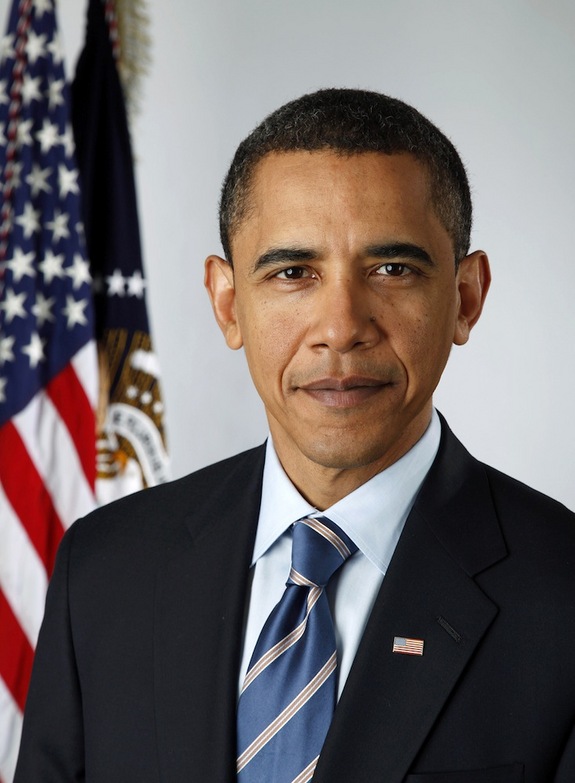5 Ways Obama's New Budget Supports Science

The proposed 2014 budget released by the White House Wednesday (April 10) brings good news for science: Under the budget, civilian research spending would swell by 9 percent from 2012 levels.
President Barack Obama's budget provides a total of $143 billion for research and development (R&D), which includes investments in energy, space exploration, basic research and STEM (science, technology, engineering and mathematics) education, cybersecurity and climate monitoring.
"The state of the R&D budget is quite strong," said John Holdren, assistant to the President for Science and Technology and Director of the Office of Science and Technology Policy, during a briefing of the White House Office of Management and Budget (OMB) earlier today.
Although the budget does include funding cuts, these are much more strategic than the sledgehammer approach of the sequester, the across-the-board cuts that took effect March 1. Here are five areas of research that will take center stage under the proposed budget.
1. Energy gets a turbo boost
The proposed 2014 budget provides $5 billion for the Department of Energy's Office of Science — a 5.7 percent increase over 2012 levels (all numbers refer to 2012 funding, because the complete appropriations bills for 2013 were not enacted when the budget was drafted).
The funding will go toward supporting clean energy and advanced manufacturing, promoting energy independence, dealing with climate change and modernizing nuclear weapons systems. [The 10 Best Alternative Energy Bets]
Get the world’s most fascinating discoveries delivered straight to your inbox.
"No area holds more promise than our investments in American energy," Obama wrote in his budget message to Congress.
2. NASA heads for asteroids and Mars
Despite trying economic times, space exploration remains a priority for the president. NASA would receive $17.7 billion in discretionary funding under the proposed budget. Whereas the total funding is 0.3 percent, or about $50 million, less than 2012 amounts, it heals deep cuts to the agency under sequestration.
NASA Administrator Charles Bolden is optimistic. "The president's budget ensures that the United States will remain the world's leader in space exploration and scientific discovery for years to come while making critical advances in aeronautics to benefit the American public," Bolden said in the OMB briefing.
With this funding, NASA plans to renew its space exploration efforts, supporting crew transportation to the International Space Station as well as manned missions to an asteroid in 2025 and robotic and manned missions to Mars. Under the new budget, NASA is also on track to launch the James Webb Space Telescope, the successor to the Hubble Space Telescope, in 2018.
3. Push for STEM education and brain research
Basic research and education in STEM fields will see their funding continue at current levels or increase under the proposed budget.
The National Science Foundation (NSF), which funds basic research and education in all fields of science and engineering, would receive $7.6 billion, an 8 percent increase from 2012 levels. The National Institutes of Health (NIH), the world's largest supporter of biomedical research, would receive $31 billion in funding, an increase of 1.6 percent over 2012 levels.
Among other things, the funding will support research efforts in massive, complex datasets known as "big data," funding for STEM education (especially for minority students) and the new brain-mapping initiative announced by Obama last week. Visionaries of BRAIN, which stands for Brain Research through Advancing Innovative Neurotechnologies and was initially called the Brain Activity Map (BAM) project, outlined their final goals in the journal Science in March. They called for an extended effort to develop tools for monitoring up to a million neurons at a time. The end goal is to understand how brain networks function. [Inside the Brain: A Photo Journey Through Time]
4. Better cybersecurity
Given an increasing reliance on digital data and communication, it's not surprising that the new budget highlights cybersecurity.
The budget proposal calls for $830 million in funding for unclassified cybersecurity research across all networking and IT R&D groups, up $150 million from 2012.
"These increases reflect the high priority cybersecurity has in [the Obama] administration," Patricia Falcone, the associate director of National Security & International Affairs at the White House Office of Science and Technology Policy said in today's briefing.
These funds will support efforts to address current cybersecurity threats to the nation, businesses and individuals.
5. Weather and climate research heats up
The proposed federal budget would continue to support important efforts in climate monitoring and modeling.
The National Oceanic and Atmospheric Administration (NOAA) is requesting $5.4 billion, which would include a total R&D budget of $733 million — $160 million more than the 2012 allotment.
Extreme weather events like Hurricane Sandy demonstrate a need for accurate weather tracking and forecasting, and NOAA funding would go toward supporting satellite systems designed to enable this work.
NOAA also plans to expand its climate research and ocean observation programs. Holdren said these efforts were good news, "because we do plan to continue to be well-informed stewards of planet Earth."
Follow Tanya Lewis on Twitter and Google+. Follow us @livescience, Facebook & Google+. Original article on Live Science.



